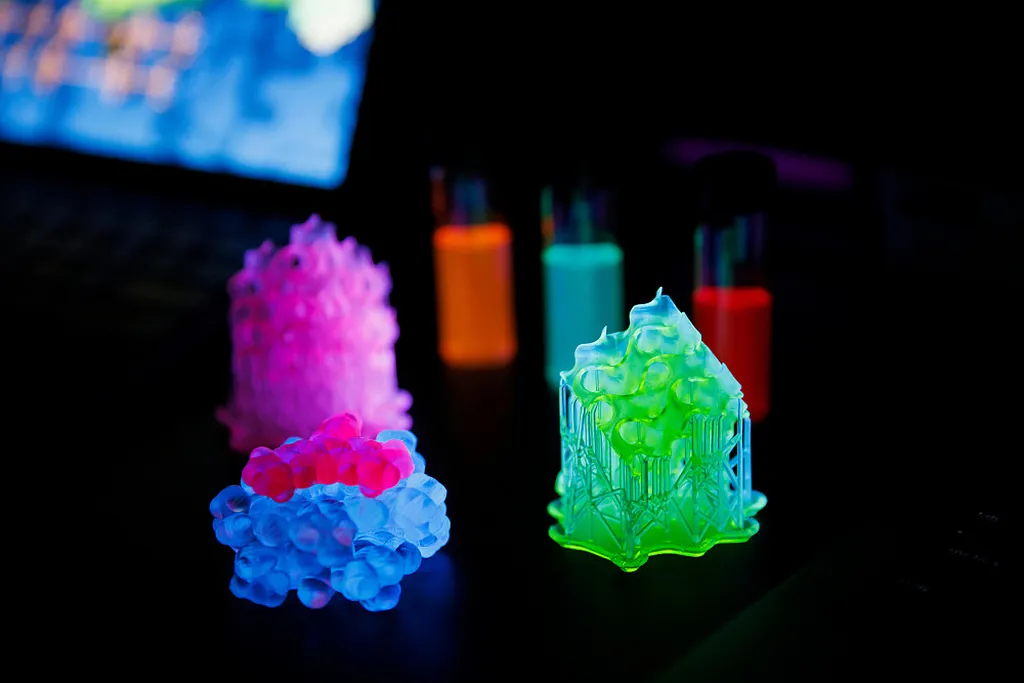In the quest for more efficient and versatile lighting solutions, a team of researchers led by K. Pratibha from the Department of Applied Physics at Amity Institute of Applied Science, Amity University, has made significant strides. Their work, published in the journal *Discover Materials* (which translates to “Explore Materials” in English), focuses on dysprosium-doped zinc silicate nanophosphors and their potential to revolutionize high-performance LED technology.
The study delves into the synthesis and characterization of these nanophosphors, which were created using a co-precipitation method. By varying the annealing temperature, the researchers observed notable improvements in the crystallinity and phase stability of the 0.5 mol% dysprosium-doped zinc silicate (Zn₂SiO₄). This enhancement in structural integrity is a critical factor for the durability and performance of LEDs.
Pratibha and her team employed UV–Vis spectroscopy to determine the optical energy bandgap of the samples. They found that the bandgap decreased slightly from 5.76 eV to 5.71 eV as the annealing temperature increased from 600°C to 1100°C. This subtle shift suggests that the material maintains its optical properties while gaining structural stability at higher temperatures.
One of the most intriguing aspects of this research is the photoluminescence behavior of the nanophosphors. When excited at a wavelength of 350 nm, the samples exhibited broad excitation peaks due to the multiple Stark level transitions between the dysprosium (Dy³⁺) ion levels. The dominant emission peak was identified at 392 nm, corresponding to the 4H15/2 → 6K17/2 transitions in Dy³⁺ ions. Additional emission transitions were observed at 470 nm and between 484 nm and 494 nm.
“The high photoluminescence intensity and stability of these nanophosphors make them a strong candidate for various applications,” Pratibha explained. “Their tunable emission properties are particularly exciting for the development of white LEDs, display backlights, and optical sensors.”
The Commission Internationale de l’Éclairage (CIE) coordinates indicate that the Zn₂SiO₄ doped with 0.5 mol% Dy³⁺ predominantly emits in the white luminescence region. This characteristic is crucial for creating high-quality white light, which is essential for energy-efficient lighting solutions.
The implications of this research are far-reaching for the energy sector. As the demand for energy-efficient lighting continues to grow, the development of advanced materials like dysprosium-doped zinc silicate nanophosphors could play a pivotal role in meeting this need. These materials not only enhance the performance of LEDs but also contribute to the overall sustainability of lighting technologies.
Pratibha’s work highlights the importance of understanding the fundamental properties of materials at the nanoscale. By optimizing the annealing temperature, researchers can fine-tune the structural and optical characteristics of nanophosphors, paving the way for innovative applications in various fields.
As the world moves towards a more energy-efficient future, the insights gained from this research could shape the next generation of lighting technologies. The potential for these nanophosphors to be integrated into commercial products is immense, offering a glimpse into a future where lighting is not only more efficient but also more versatile and sustainable.
In the words of Pratibha, “This research opens up new avenues for the development of high-performance LEDs and other optical devices. The stability and tunability of these nanophosphors make them a promising candidate for a wide range of applications.”
As the scientific community continues to explore the potential of these materials, the energy sector stands to benefit from the advancements in lighting technology. The journey towards a brighter, more sustainable future is well underway, thanks to the groundbreaking work of researchers like K. Pratibha and her team.

